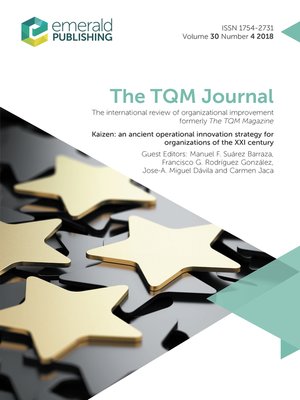The TQM Journal, Volume 30, Issue 4
ebook ∣ Kaizen: An Ancient Operational Innovation Strategy for Organizations Of The XXI Century · The TQM Journal
By Manuel F. Suárez Barraza

Sign up to save your library
With an OverDrive account, you can save your favorite libraries for at-a-glance information about availability. Find out more about OverDrive accounts.
Find this title in Libby, the library reading app by OverDrive.



Search for a digital library with this title
Title found at these libraries:
| Library Name | Distance |
|---|---|
| Loading... |
This eBook addresses the importance of the improvement concept in terms of the Japanese philosophy known as Kaizen (continuous improvement) (Imai, 1986). Kaizen originated in manufacturing processes (Imai, 1986, Fujimoto, 1999). Some authors attribute its beginning to the work of William Deming and Joseph Jurán (Mizuno, 1988), whereas others relate it to the improvement of processes in the Toyota Motor Corporation during the Fifties and Sixties (Nemoto, 1987; Bessant and Caffyn, 1997). Crucial elements in both cases are the importance of self-development, discipline and pride in one's work within the Japanese culture (Sakaiya, 1995; Suárez-Barraza, et al., 2011). The term Kaizen is the combination of two Japanese ideograms (Kanjis), Kai (?) which means change, and Zen (?), which means to improve or to be reborn (Newitt, 1996). The Japanese culture, oriented towards a philosophy of disciplined and constant self-improvement, which probably had its origin in the Bushido code of the "samurai" during medieval Japan (Sakaiya, 1995), easily assimilated the lessons of statistical process control, thus giving rise to the Japanese philosophy called Kaizen (Suárez-Barraza et al., 2011).







